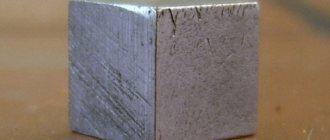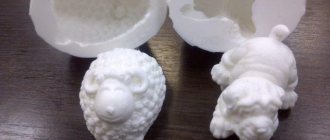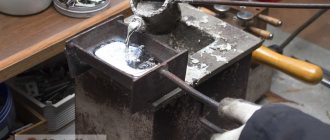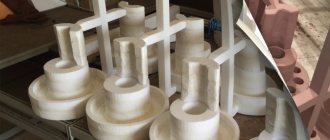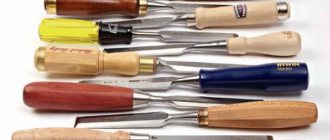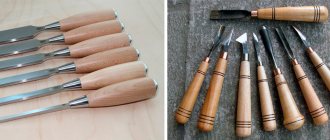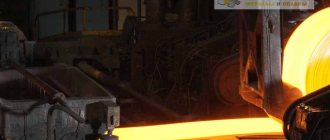The production of small amulets in the form of figurines, figurines and products, made from tin, on your own, completely at home, can be not only a simple but also an interesting hobby or hobby, but also a completely successful business that can bring good benefits.
Because such small but valuable things are items that many people are willing to collect and purchase for a good price. Currently, popular and frequently purchased goods include a variety of souvenirs and little things made from tin, which may include figurines of totem animals and spirits.
What and how to make a mold from?
Previously, when casting tin and its alloys, gypsum was used to make molds. The development of chemical technologies has brought many new materials into the arena, among which silicone rubbers and sealants have taken their rightful place. It is necessary to determine the temperature of the sealant that it can withstand. It must correspond to the melting point of the alloy used - up to 240 degrees.
The softness of the sealant will also affect the quality of the resulting casting, increasing the risk of deformation of the mold material. The prototype must be covered with a separating layer of Vaseline to prevent sticking and you can begin applying silicone. It is better to use transparent silicone, as in this case it will be easier to control the thickness of the mold and the formation of air bubbles. When the prototype being copied is a light and thin design, questions arise: How to cast tin?, How to cast thin tin?, How to make a mold for thin casting?. To copy the surface relief of the prototype as accurately as possible and prevent the appearance of bubbles in the mold, silicone is diluted with a solvent (white spirit) or gasoline. The resulting liquid mass is applied in thin layers using a brush and allowed to dry overnight. After applying 3-4 layers of liquid mass, the future mold is coated with undiluted silicone.
After the mold hardens, a gypsum sarcophagus is made, in which conical locks are cut out, a vent groove is formed to release excess air, and a sprue is formed for pouring the alloy. Having made the sarcophagus, the silicone mold is carefully removed, the position of the vent hole is marked, the silicone is cut into halves in the form of a book, the intended hole is burned with a hot needle, and the prototype is removed. To clearly develop the relief of the casting being formed, the inner surface of the silicone mold is rubbed with graphite powder.
Shoemaker, gardener and archer
About leather embossing, shoe sewing, vegetable gardening and archery
How to make a silicone mold for metal casting
Silicone molds for metal casting are either solid or consisting of several parts. I had already practiced with a one-piece form, and now I decided to make a form consisting of two halves. Below there will be a description of the process. I’ll say right away that the mold turned out to be of very good quality, but I haven’t poured metal into it yet, and I don’t know how it will behave.
Next there will be a lot of letters about silicone molds; for those who don’t want to read everything, the result can be seen immediately:
Before you start creating a form, you need to decide what it is needed for. I need to cast pewter alloy (58% Bi + 42% Sn) which melts at 281°F/138°C and has a working temperature of 300°-400°F (149°-203°C). Many types of heat-resistant silicone are suitable for these temperatures, but this time I chose Mold Star 30. This silicone can withstand temperatures up to 450°F (232°C) and has a very low viscosity (compared to other silicones). Low viscosity is needed so that air bubbles trapped in liquid silicone can come out more easily and not spoil the surface of the mold.
To fill the liquid silicone we build a box. Transparent walls are more convenient; through them you can see what is going on inside. We check that the box is not leaking.
Fill the box halfway with clay. I used polymer clay. We heat it and recess the model halfway.
Using a pencil or finger, make indentations in the corners - they will form locks that will keep the halves of the form from moving relative to each other.
Fill with silicone. To reduce the number of bubbles, silicone should be poured in a thin stream from a height of about a meter.
When the silicone has hardened, the box is disassembled and the polymer clay is separated from the model and the hardened silicone.
The silicone (the first half of the mold) is again placed in the box. The model is cleaned of pieces of polymer clay. Future channels for air removal and a funnel for casting are glued to the model.
The mold is carefully sprinkled with talcum powder (baby powder), its excess is blown off. The second half is poured.
When the silicone has hardened, the halves are separated.
This entry was originally posted at https://eugenepik.dreamwidth.org/23990.html. Please comment there using OpenID.
How is casting done?
The silicone cocoon is inserted into a plaster sarcophagus, the halves are connected and tightened either with an elastic band or twine. Tin or its alloy is melted, held for 30 seconds after melting, and it is poured into the prepared mold through the sprue. Pouring continues until the molten alloy appears in the thrust hole.
After cooling, the casting is removed by the formed sprue, cleaned of excess tin that interferes with the removal of the silicone mold, and the casting is removed. The first casting will be unsuccessful, since gases will escape from the silicone and excess graphite will stick.
Source: olovok.com
Casting tin into silicone molds
October 15, 2022
Dear colleagues, friends!
We are starting preparations for the traditional annual virtual competition of bench models on the site Dishmodels.RU - DiSHow-2019.
For all the necessary information, see the section of our forum https://www.dishmodels.ru/forum/forumdisplay.php?159
Making molds for casting from tin. Metal casting
Sergey Slyshov aka sse2009
I will describe the technology for creating a form for copying Orc. In this case, he will act as a master model. The master model must be made in a one-piece mold (in principle, most models are cast in such molds). It is advisable to clean the master model from flash, clean along the parting line of the mold and eliminate defects if any. Our form will be single-part and two-component, that is, one parting line and two types of material.
Materials and tools for making molds. 1. Sculptural plasticine (all other silicone sealants are very corroded, and this one is a little too).
2. Silicone plumbing sealant with heat resistance of 180 degrees. 3. Alabaster or building plaster. Water.
4. Vaseline (can be bought at a pharmacy) and a brush.
5. Cardboard (better glossy, less wet) and scissors.
Work order.
1. Press the master model into the plasticine approximately along the parting line from the factory mold (Photo 1). I usually place the model facing out.
2. Apply a thin layer of sealant using a match or toothpick, trying to fill all the recesses (Photo 2). Leave until completely hardened (the time is usually indicated on the tube with sealant, approximately 5-8 hours, depending on the thickness of the layer).
3. Apply another 2-3 layers so that the total thickness of the mold in all sections is at least 5 millimeters.
4. After complete hardening, it is easy to determine that the form becomes quite rigid, remove the master model from the plasticine and clean it of plasticine (photo 3).
5. Apply Vaseline to the resulting half; you don’t have to apply it to the master; the sealant does not stick to the polystyrene (although before starting work it would be a good idea to check the interaction of the model and the sealant, for example, on a piece of sprue). We repeat points 2 and 3.
6. Carefully cut the resulting cocoon around the perimeter (along the parting line), removing any irregularities (Photo 4). IN SOME CASES WE DO NOT REVEAL the form, even if we really want to see what happened.
7. Making formwork (boxes) for pouring alabaster. We make the box in such a way that there is approximately 5 mm between the silicone mold and the side walls, the length of the injection channel is 50-60 mm, and the height of the walls is 45 mm. This is not an axiom.
8. Pouring alabaster (Photo 5). All work must be carried out quickly, as alabaster hardens quickly. We dilute it with cold water to a creamy state and fill half the box, put the mold in and press it halfway. We form the injection channel, I use either plasticine or a core from a hot-melt gun. From my experience I can say that it is better to make the casting channel cylindrical rather than conical. The form should dry for at least a day. Apply Vaseline with a brush to the connector plane of the plaster mold; you don’t need to smear the plasticine and silicone mold. We spread and fill the second half of the mold. I usually wait about half an hour and separate the halves of the plaster mold (Photo 6). We dry the alabaster for at least 2-3 days (on a battery, 1 day is enough), otherwise the mold may break when pouring the metal.
Types of Liquid Silicone: rules for selection and purpose | Brands and characteristics of molding silicone
Silicone for molds is a liquid 2-component material for the manufacture of elastic molds. Matrices made from this material are tensile and suitable for reusable use.
You can buy inexpensive molding silicone and professional silicone compound with delivery throughout Russia in the online store Smola20.ru. The site presents two-component liquid silicone for pouring of different brands and series.
It varies in type and physical and mechanical properties.
The store stocks silicone designed to create soft and flexible yet durable shapes. It can be divided into two types depending on which catalyst it reacts with. Hardeners for the compound are made using tin or platinum.
Non-food grade silicone for tin based casting
Silicone for casting products from polymer, polyurethane and such inexpensive materials as concrete and gypsum is made from tin. Casting quick-drying liquid compound is a non-food type of composite used in the manufacture of matrices for making large numbers of copies from models during finishing and restoration work.
In the Smola20.ru online store, liquid silicone for elastic, tear-resistant molds is presented by the Master Mold brand. The two-component, fast-curing, tin-based material is sold with the S marking.
The number after the letter indicates the Shore hardness level. For example, molding silicone S15 is used for the manufacture of small-sized molds with small complex parts. S30 – for large shapes.
Another brand of liquid 2-component tin-based compounds is Smooth-On Mold Max series.
Molding silicone for creating food molds
Soft silicone for platinum-based molds is presented in the catalog under the brands Smooth-On and Sorta Clear. A liquid compound with varying degrees of Shore hardness is used to make food molds, but can also be used to fill other soft molds.
This casting silicone is also two-component. According to the degree of hardening, it is divided into quick-drying and slow-drying. The latter's working time allows you to spend 40-50 minutes working on small details of the form.
Scope of application of food and non-food molding silicone
Liquid molding silicone is used in finishing works for the production of artificial stone and other materials.
It is also used in restoration work, when it is necessary to restore part of a baguette or an architectural object. But these are not all areas of application of silicone for making molds.
With its help, you can create matrices for making copies from different art models.
In the food industry, molds made from this material are used to make shaped chocolate, ice cream, ice cubes and baked goods.
In light industry, silicone matrices are used for casting shaped soap and children's toys from plastic or rubber. This composite is also used in the automotive industry.
Lightweight plastic parts for vehicles are cast using silicone molds.
Buy on resin20.ru - it’s always convenient and profitable
Do you want to order durable silicone for making molds at a low price? We offer for purchase inexpensive universal composites and professional compositions for injection molding of our own production.
In the online store Smola20.ru.
There is a wide range of molding materials, which you can buy with delivery in Moscow, St. Petersburg, other regions of Russia, as well as Kazakhstan and Belarus.
The sale of poured silicone is organized in such a way that you can pick up your order at pick-up points. You will find their addresses in Moscow, St. Petersburg and other cities in the “Delivery” section.
You can pay for your order by cash on delivery when ordering by Russian Post. We have provided 10 more options for cash and non-cash payments for your convenience.
Payment of the full cost of the order upon receipt is also possible upon delivery by a transport company. Free delivery of molding silicone and other products from our website is provided for orders over 5,000 rubles.
But even if you buy for a smaller amount, it will cost less - when paying online, the price is reduced by 3%.
11 payment methods.
Choose any!
3% discount when
paying online by card
More than 630
pick-up points throughout Russia
Express delivery throughout Russia
,
to Kazakhstan and Belarus
Tin casting
Tin is a low-melting metal. It ranks fiftieth in the periodic table. It is quite widespread in nature, in particular, ore for its production is actively mined in the Laptev Sea.
Man began to use tin back in the Bronze Age. In particular, it was used to produce bronze. Nowadays, it is used as solder, coatings, etc. In addition, tin is used in jewelry and in the manufacture of toys, for example, tin soldiers, etc.
Tin casting process
The melting point of tin is only 231 °C. But its boiling point is within 2,300 °C. The temperature at which the metal will be melted can be achieved at home. That is, it is quite possible, of course, subject to certain rules and safety precautions, to perform tin casting at home. In industrial conditions, special centrifugal casting machines are used for tin casting. To make molds, gypsum, alabaster, epoxy resin, silicone and, of course, metal are used.
Tin casting process in industry
Creating a form is perhaps the most important process. First you need to create a sketch of the future model. After this, the model is made from polymer clay. To apply small parts you must use an awl. Another, no less important process is the production of injection molds. When manufacturing it, it is necessary to ensure that the correct connector is present. It is needed so that the finished casting can be removed without causing damage to the product itself.
Silicone tooling for tin casting
Making equipment from silicone will require more material and time. This is because it must be subjected to a vulcanization process. But as a result of all the hassle, multi-turn equipment for casting tin products will be obtained. If the future part is quite complex, then it will be necessary to provide for the presence of embedded parts. We must not forget about the air ducts; air must escape through them as the mold is filled with tin.
An important element of the design of the equipment is the hole through which the filling will be performed. If it is small, the metal will flow too slowly and the solidification process may begin before it is completely filled. Before casting begins, the mold halves must be joined together and placed between a sheet of plywood. The sheet must be at least 12 millimeters thick, and the size must exceed the dimensions of the metal mold. Upon completion of assembly, the entire structure is tied together with a rope.
Two half-forms between sheets of plywood, tied together with a rope
Casting technology is not very complicated; it makes sense to prepare the metal for pouring after the final assembly of the mold. To do this, it needs to be warmed up well. Once a yellowish film appears on its surface, we can assume that the tin is ready for pouring. If the metal is overheated, a blue or purple film will float on the surface of the melt. Molten metal is poured in a thin stream. In this case, you can lightly tap the housing to remove air. You can open the mold only after the cast part has completely cooled. To remove the casting, you need to use forceps. You must be prepared for the fact that the first product received will have some surface defects.
Removing excess tin (burr)
The machining sequence is as follows. First, the flash is removed. So, they call the excess melt that flows into the seam of the mold. A scraper is used for this. Side cutters are used to remove the sprues. For final processing of seams, use abrasive sandpaper with the finest grain (zero).
Technology
Small-scale production by casting in silicone molds has certain features and consists of several stages:
- Production of a product prototype. We are talking about designing a three-dimensional model on a computer and then printing it on a 3D printer or CNC milling. Alternatively, a customer’s ready-made prototype can be used, but in 90% of cases it requires modification.
- Preparation of the master model. In other words, this is an improved product prototype ready for production of a casting mold. The master model determines the quality of the entire circulation, so serious requirements are put forward for its development. Specialists apply additional compounds to obtain textures, seal all holes with adhesive tape, reinforce deep grooves with metal elements and apply adhesive tape to the future parting line of the form.
Making silicone molds for casting. To produce a mold or, as it is also called, a matrix, the master model is placed in formwork - a sealed container made of solid material corresponding to the dimensions of the product. Then a system of tubes (gating system) is installed to feed liquid plastic into the mold. After this, the silicone, which has previously been degassed in a vacuum chamber, is poured into the formwork. Finally, the container with silicone is left to solidify in a special chamber for about a day, and only after that the finished matrix is obtained.
Test casting and finalization of the mold. If, after test casting of a part, the resulting product differs from the master model, the mold is modified. As a rule, upgrading a silicone matrix does not take much time, and mainly consists of improving the gating system and channels for removing air from the mold during pouring, based on the first sample obtained.
Production of molds. After the customer has approved the result obtained after the test casting, small-scale production of products begins. The number of silicone molds depends on the number of final products on the basis that one matrix is capable of producing 20-50 units of high-quality products, depending on the characteristics of the geometry and casting material.
This algorithm ends with the direct casting of plastic. 3dVision uses vacuum casting technology in silicone molds, which uses two-component polyurethanes with different physical and mechanical properties. Due to the speed of production of equipment, this method allows you to obtain a small batch of plastic products in just a few days.
Tools and materials for casting
Tin is almost an ideal material for casting in both domestic and industrial settings. What materials and tools will be needed to produce the mold and perform casting. To make the mold you will need sealant and plaster. The first will be used to make the equipment itself, and gypsum will be needed to make the frame into which the technological equipment will be installed.
Tin Casting Tools
In addition to the materials mentioned above, you will need simple metalworking tools - files with different sections, pliers, a soldering iron, etc.
Tin casting molds
For the manufacture of injection molding equipment, materials such as gypsum or silicone are used. It all depends on the part and its purpose. The simplest one is gypsum. To make it you will need a wooden box, some plaster and a piece of metal tube.
Creating a snap-in is performed in several steps:
- Preparation of gypsum mixture. It should resemble thick sour cream in appearance.
- The mixture is poured into a pre-prepared box and leveled.
- To obtain a half-mold, you need to take the part and immerse it halfway in the prepared plaster. A similar operation must be performed with the second half of the part. As a result, 2 half-forms will be obtained.
- The halves must be connected, or fastened with locks, or simply tied together with a tight elastic band. A prepared metal pipe must be inserted into the place through which the molten tin will be poured.
In principle, the injection molding equipment is ready for use. The molten tin can be safely poured into the resulting mold.
What is the difference between gypsum forms and others - the main thing is that they have less durability. If their surface is not prepared, then such equipment can withstand one or two cycles.
Casting process
The pouring process itself can vary greatly depending on the material used. The material is selected based on the requirements for the product. Currently, the market is widely represented by various types of silicones and polyurethanes, which copy many types of rubber and plastic.
When pouring polyurethanes, a pressure chamber is often used, in which the mold is placed under an excess pressure of 2-4 atmospheres. This is done in order to remove bubbles as much as possible. Silicones are degassed before pouring, similar to the mold casting process.
This technology is used to produce prototypes of rubber goods and prototypes of plastic parts.
Main methods of tin casting
In industrial conditions, there are several technologies that make it possible to quickly and efficiently produce castings from tin and its alloys.
The most popular is casting in a centrifugal machine.
The essence of this method is quite simple: molten metal is fed through a system of gates into molds located around the same axis and rotating at a certain speed. Their rotation causes the creation of a centrifugal force, which presses the incoming metal inside the mold. Thus, excess gases are eliminated from the body of the future casting. This engineering solution makes it possible to obtain metal with a fine-grained structure. Casting is performed in metal molds produced in a factory. Before pouring, compositions can be applied to the working surfaces to facilitate the removal of the finished casting from the mold.
Silicone for metal casting
To produce small quantities of plastic blanks, vacuum casting into silicone molds is most often used. This method is quite economical (manufacturing a metal mold requires more time and money). In addition, silicone molds are used repeatedly, and this also significantly reduces the cost of production.
Molding plastic into silicone molds. Equipment
Small-scale production of cast blanks is a technological process that allows you to produce a batch of exact copies of a part of any complexity. Very often, the technique is used to obtain prototypes, which are tested before launching mass production, testing the appearance and design.
Industrial casting of plastic into silicone molds equipment includes the following: a vacuum chamber (injection molding machine), a heating cabinet, a vacuum mixer (mixer). Silicone is first prepared in a vacuum chamber, where the process of degassing the material occurs. This is necessary to prevent the formation of bubbles on the mold.
Once the casting mold has been made and preheated, the polyurethanes (or resins for the final part) are mixed directly. This process takes place in a vacuum chamber. The mixture is poured into the mold through the sprue.
For final processing, it is necessary to place the workpiece in a special heating cabinet, where the final hardening of the product occurs at a temperature of 70°C.
Vacuum chamber. Main characteristics
As a rule, automatic casting into silicone molds is used on a production scale. The equipment, namely a vacuum chamber, allows you to control both the temperature and the casting speed.
The operator does not require special skills and knowledge, since all control comes from the operating system, which has both automatic and manual switching. It is also possible to edit a given program. Various modifications of cameras are capable of producing workpieces up to 5 kg (for example, camera ST-02).
The installation is equipped with a lift for lifting silicone molds. It is worth noting that the ST-02 system allows the use of both small and fairly heavy matrices.
Another option is the MCP camera. This equipment for casting in silicone molds makes it possible to produce parts with thin walls and complex configurations. This process is carried out thanks to differential pressure.
The resulting casting is then removed and subsequently hardened in air.
Vacuum casting into silicone molds for some types of plastics is completed in ovens, which ensure uniform heating of the air and, accordingly, the workpiece.
After the plastic mass has completely hardened, it is carefully removed from the mold. The surface is mechanically processed, protrusions are removed and cleaned, and irregularities are ground.
If necessary, the workpiece is coated with either paint or other protective material. It is necessary to clean the silicone mold and remove any remaining plastic. Next, it is washed, preparing for subsequent use.
It is worth noting that casting plastic into silicone molds involves repeated use of matrices (from 20 to 80 times).
The main advantages of the method
Small-scale production is developing dynamically, it allows you to qualitatively evaluate the sales market, test products, and create unique original works in small quantities.
Silicone molds, which are used for plastic molding, make it possible to completely copy the texture, shape, and design of the workpiece. The part is easily released from the matrix, which can also be used repeatedly.
Castings have a minimum number of surface defects and optimal physical and mechanical properties. In addition, in some cases, even metal can be poured into silicone molds.
Silicone itself can be purchased from 500 rubles per kilogram, plastic - from 700 rubles. The cost of metal forms is quite high, and sometimes their use is simply ineffective (if the circulation is several units).
Silicone matrices are also suitable for home use; there is no need to buy expensive equipment.
All you have to do is make a mock-up yourself, take into account the lifetime of polyurethanes (the period when they remain liquid and suitable for pouring), observe all the technological nuances - and casting in a silicone mold can be carried out even at home. According to calculations, the cost of one blank in this case is about 70-140 rubles.
Small-scale production services in Moscow at an excellent price – Cybercom Ltd
You can submit an application for small-scale production of silicone casting right now. Our managers will contact you within 10 minutes and answer all your questions
If you need to produce a small batch of plastic products according to an existing sample, then casting in silicone molds opens up wide possibilities.
They are manufactured by feeding a molten polymer mixture into a formwork with an installed model of the required configuration. After polymerization and hardening, a very precise base is formed (a cavity for pouring plastic), suitable for reusable use.
Modern equipment makes it possible to obtain a master model through modeling followed by 3D printing on printers with high accuracy and detail.
After this, sequential casting into silicone molds is carried out, the technology of which is already quite simple and understandable even to non-specialists. A polymer mixture based on polyurethanes (or other compounds with comparable properties) is prepared and poured in a vacuum into ready-made silicone molds.
By varying the composition of the polymers, it is possible to achieve changes in certain properties of the future structure: strength, wear resistance, appearance, color, etc. After complete hardening, the product is removed and the mold is sent for a repeat cycle. Depending on the materials, the number of repetitions may vary.
Sooner or later, the quality begins to decline, and it is better to replace the “template” for filling.
Thanks to the use of a wide range of casting polyurethanes, it is possible to obtain products with various physical and mechanical properties (rigid, imitating the properties of ABS, semi-rigid, elastic, heat-resistant, transparent and rubber-like.
The technology of casting into elastic silicone molds allows:
- obtain exact copies of the master model with stable dimensions;
- check the assembly and operability of the structure, work out the design of the product;
- carry out tests before production of serial equipment;
- produce a batch of products within a few days after making the silicone mold;
- conduct marketing research;
Tin casting at home
As already noted, tin casting at home is used to produce fishing gear, figurines, for example, soldiers, etc. The procedure for performing tin casting is as follows:
- Making the mold.
- Casting products.
- Mechanical processing of castings.
To perform tin casting at home you will need:
- Kitchen stove;
- Tin.
- Casting mold.
- A file, a scalpel and some other simple tools.
Accessories made of aluminum or silicone can be used several times. To obtain a high-quality result, you will have to spend a lot of time, and it is advisable to have certain artistic skills. After the figurine is cast, it is advisable to paint it. Acrylic paints are used for this. In order for it to fit well, the figure must be degreased before starting work.
If you find an error, please select a piece of text and press Ctrl+Enter.
Source: stankiexpert.ru
How to Make a Tin Mold
There is no need to pay a lot of money in a gift shop for a coveted tin figurine or decoration. Due to the fact that tin has a low melting point, you can make tin products yourself at home. A set of tin soldiers will be a wonderful gift not only for a child, but also for a serious adult.
Making a mold for pewter is perhaps the most difficult question a beginner faces. However, there are no particular difficulties here either. Before you begin directly making the casting mold, you should stock up on the necessary materials and tools in advance.
You can buy gypsum or alabaster, as well as silicone heat-resistant sealant at any hardware store. A scalpel or sharp blade is easy to obtain. Plasticine is generally easier than that. A simple pencil, dishwashing liquid or liquid soap can be found in any home.
First of all, start applying silicone sealant to the product model prepared in advance for this purpose. Silicone is applied in several layers. Apply each subsequent layer on top of the previous one only after complete drying. The drying time of the sealant should be indicated on the packaging.
Apply the very first layer of silicone especially carefully so that there are no gaps left. Carefully handle all irregularities and depressions. After the first layer has dried, examine it for defects. If there are gaps, cover them, apply the next layer, dry it, etc.
In the end, you should have a fairly thick silicone shell through which the model itself can barely be seen. Don't forget that silicone and plaster molds must have one or more conical holes. These holes are located with the wide end outward “at the feet” of the figure and serve for pouring tin into the mold.
When the silicone mold has dried well, make formwork for pouring gypsum. The formwork is a rectangular frame that is placed on a sheet of glass. To prevent the gypsum solution from flowing out through the gaps between the glass and the formwork, they are covered with plasticine.
Now gradually add plaster into a small amount of cold water, stirring continuously. The resulting mixture should have a consistency similar to liquid sour cream. Pour this gypsum solution into the prepared formwork. Immediately after that, drown the figurine in a silicone shell in the not yet hardened plaster halfway along the entire length. This will be half of the pewter mold.
Injection plastic and silicone for making molds – Machine tools, welding, metalworking
Compounds are compositions based on various polymers. offers two-component silicone and polyurethane compounds and injection molded plastic of its own production.
They contain pastes of various viscosities, as well as a catalyst-hardener. After mixing the two components, the mixture hardens within 4–24 hours.
During the curing process, no gas or vapor substances are released.
Silicone compound for molds: scope of application
The unique properties of silicone have ensured its widespread use in everyday life and industry. It is on its basis that silicone compounds are produced. This is an excellent material for creating pouring molds.
offers a wide range of silicone compounds intended for the production of molds for casting wax, polyurethane, soap, polymer concrete, fusible metals, gypsum, polyester, epoxy and acrylic resins.
Advantages
Pouring compounds for silicone molds do not lose their properties at temperatures from –60 °C to +250
The material has a number of advantages:
- Chemical resistance to alkalis, weak acid solutions, phenols, hydrogen peroxide and mineral oils.
- Resistant to atmospheric influences.
- Lack of adhesion, which makes it possible to avoid the use of additional release agents in molds and workpieces.
- High wear resistance (the resulting forms can be used many times).
- High precision reproduction of small surface details.
Silicone compounds produce molds that 100% replicate even the most complex terrain. They are highly elastic, so you can remove frozen objects from them without much effort.
Features of the use of polyurethane resins
Polyurethane compounds (or polyurethane resin) are also used to create casting molds, but they have slightly different properties and are cheaper.
Advantages:
- High tensile strength, tearing strength and elongation.
- High abrasion resistance, so they are ideal for working with concrete and gypsum.
- Making castings from injection molded plastic does not take much time.
Attention! Products made of polyurethane resin can withstand temperatures of no more than +100 °C, so they cannot be used to work with substances that heat up during the curing process. In addition, it is imperative to use a release agent.
The range of silicone and polyurethane compounds "Penta Junior" is represented by the products UNISIL® 91xx, UNISIL® 93xx, UNISIL® 95xx, UNISIL® 96xx, as well as UniCast polyurethane resin, the Uniskin acrylic system and special dyes for coloring resins and silicone rubbers.
Basic recommendations for choosing compounds for making molds
| Silicone compounds | |
| UNISIL ®91ххSilicone compounds for small runs, simple forms (circulation* 500 pcs) (gypsum, wax, resins) | Unisil®- 9512, 9535, 9560,9728 |
| UNISIL® 96ххHigh-strength silicone transparent non-shrinking compounds (circulation* > 500 pcs) (gypsum, wax, resins) | Pentelast®-750 A, B |
| Unisil®-9610,9620, 9628, 9638, 9640 | |
| Unisil®-9641 | |
| Polyurethane plastics (polyurethane resin) | |
| UniCast “Liquid” plastic for the production of decorative castings (polyurethane resin). | UniCast K |
| UniCast Trans F, S | |
| Acrylic systems | |
| Uniskin – acrylic system Acrylic resin for the production of decorative castings. | Uniskin gray, white |
| Other | |
| Dyes are used for coloring polyurethane resins and silicone rubbers |
*circulation is designed for pouring plaster and wax. For resins, circulation is 10-50 castings on any rubber
.
Silicone compounds for molds are intended for the manufacture of molds for casting gypsum, wax, soap, polyurethane, polymer concrete and fusible metals, epoxy, polyester and acrylic resins. These materials have a liquid consistency and consist of two components: silicone and a hardener.
The advantages of silicone for molds include its ability to reproduce the most complex parts and objects, resistance to high and low temperatures, and resistance to chemicals.
It is worth noting the unique technical properties of the material for molds, which ensure a long service life of the products and their reusability.
Such forms have high elasticity, due to which they allow parts to be removed from them without causing damage or defects.
All materials differ in viscosity, elasticity, curing period, and tensile strength.
Basic recommendations for choosing compounds for making molds.
Having trouble choosing? Contact our consultants to choose the most suitable compound for your molds. You can order and buy the company's products by calling in Moscow and (495) 730-58-51 or by sending a request to [email protected]
The price is indicated in the price list.
Silicone molding: equipment. Vacuum casting in silicone molds
To produce small quantities of plastic blanks, vacuum casting into silicone molds is most often used. This method is quite economical (manufacturing a metal mold requires more time and money). In addition, silicone molds are used repeatedly, and this also significantly reduces the cost of production.
Plastic molding
The essence of the plastic casting technique is as follows. The molten material is located in the unit’s screw (special equipment for casting into silicone molds).
Under the influence of the piston, the mass moves along the sprue channels, then fills the mold space. This way you can get a casting.
When plastic is heated, the atoms that make it up begin to move chaotically and randomly.
However, upon cooling, crystallization centers begin to form. Crystal growth occurs near the walls of the mold, and then the same process occurs inside the casting. At this stage, it is very important to observe the temperature regime and choose the right holding time. Otherwise, casting plastics into silicone molds will be of poor quality, with visible traces of defects.
But, first of all, the molds themselves must be made into which the mass for crystallization will be poured.
There are several ways to create silicone molds. The first one is a solid fill. This method is suitable for simple designs: reliefs, souvenirs, two-dimensional parts. The model is placed in formwork and filled with silicone. Split molds are made similarly to the previous ones and are used for more complex shapes.
Two-part molds are produced in several stages. First, the first half of the workpiece is poured, after the silicone has hardened, the mold is turned over and the second part is made in the same way. With this method, it is very important to designate special locks on the base (casting in a silicone mold of this type should occur without displacing it).
The “spread” form most accurately replicates all the details of the workpiece. A fairly viscous silicone is applied to the part using a brush. The process takes place in several stages, this is necessary to completely repeat all the small nuances of the product. At the same time, the form itself is quite thin - from 3 mm.
To keep it in shape, an outer hard shell is created at the final stage.
Silicone for making molds
Vacuum casting in silicone molds involves the use of various materials to create matrices. One of them is Mold Star type silicone. It is used for continuous filling, it is quite durable and flexible. Hardening occurs at room temperature.
For the “spread on” technique, the Rebount series is most often used. This silicone has a high viscosity, which can be controlled using a thickener. Casting in a silicone mold of this kind allows you to obtain a high-quality, durable matrix, and, accordingly, an ultra-precise part.
There are also translucent silicones that are ideal for cut forms.
Casting materials
As a rule, polyurethane is used to make the parts themselves. The material has high impact strength, hardness, and elasticity. Polyurethane rubbers have higher tensile strength and tear strength. They are used in the manufacture of various tapes, cylinders, dies, gaskets, and bushings. Transparent plastic is also used for casting.
